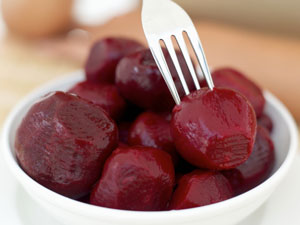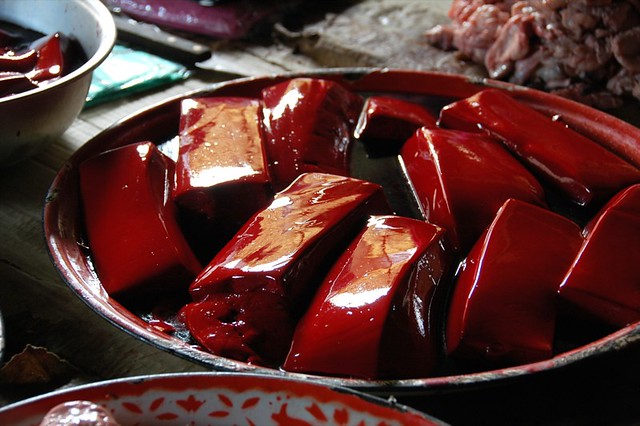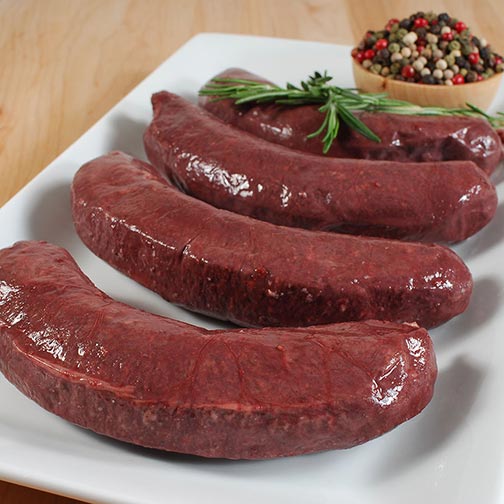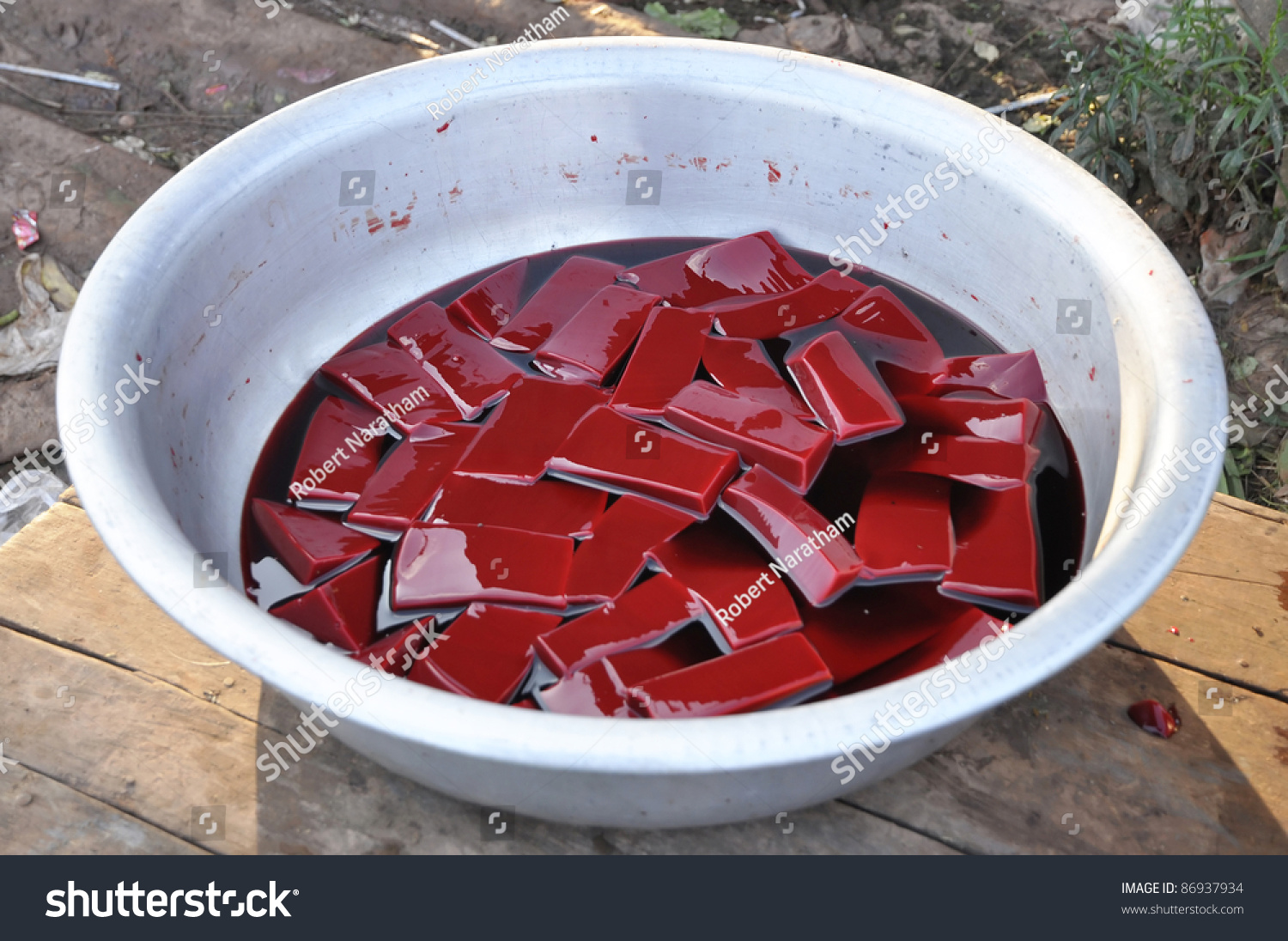Blood as food
Blood belongs next to muscle meat and offal some the most nutritious ingredients from slaughtered animals. In addition to in comparison to meat only slightly higher proportion of water it contains 18 percent protein and two percent of other substances, particularly iron.
Processing as food
As blood starts to clot in contact with air after a very short time, it must, if it is not drunk immediately, beaten, what clotting delayed.
It is processed in Europe today, especially for sausages and the like. Blood sausage is the oldest surviving type of sausage that is mentioned in Homer's Iliad and the world's pudding is used in many regional cuisines, such as a red crimping head or English and Scottish Black, usually mixed with other parts of the animal, and seasoned with herbs. The main components are blood, fat or bacon, often braised onions and milk or cream and regionally different spices.
Traditionally, blood is also a component of blood pudding, blood soup, Schwarzenauer or Pomeranian Tollatschen and also serves to bind sauces, especially of game dishes such as jugged hare.
Cultural History
Served as food safety with blood already in prehistoric hunter-gatherers, probably similar to those still existing societies where the fresh blood and especially perishable raw liver hunters used immediately after the killing of the animal for food. Among the most primitive cooking techniques after grilling cooking in animal stomachs, casings and skins over an open fire is one - a preform of the sausage, in addition to meat and fat residues, offal and fermented stomach contents of ruminants and the blood could be used.
A direct form of blood consumption is known to this day by nomadic peoples such as the Masai: the tapping of cattle, horses or camels, whose blood mixed then directly or with whose milk is drunk. In this case, only so much blood is taken that the animals are not seriously damaged. This practice was common in the past even with Berbers and Mongols.
In Judaism and Islam, the consumption of blood is taboo, and therefore there the slaughter is prescribed, that the killing of the animal by severing the carotid arteries, which can largely bleed through their own heart activity the animal. Less well known is that the consumption of blood was forbidden even in the early days of Christianity by the Church and was considered pagan. In the Torah, God forbids, for example, in the Old Testament after the flood the consumption of blood ( Genesis 9.4 AU) and the New Testament in the Apostolic Decree (Acts 15:19-21 EU) the consumption of blood.
Blood was in some cultures as the seat of the soul, even in animals. In the Jewish and Islamic culture blood was therefore excluded from human consumption. In northern Europe, however, it was considered inappropriate, not to use it, since it was assumed that the consumption of animal blood, power and strength conferred. This idea also changed the Christianization not always; the Nordic peoples retained their traditional blood dishes, such as blood soup, blood sausage and the Irish drisheen in.
Swell
- Alan Davidson: The Oxford Companion to Food. 2nd edition. Oxford University Press, Oxford, inter alia, 2006, ISBN 0-19-280681-5, Article: Blood.
- Blood as food
- Animal product










